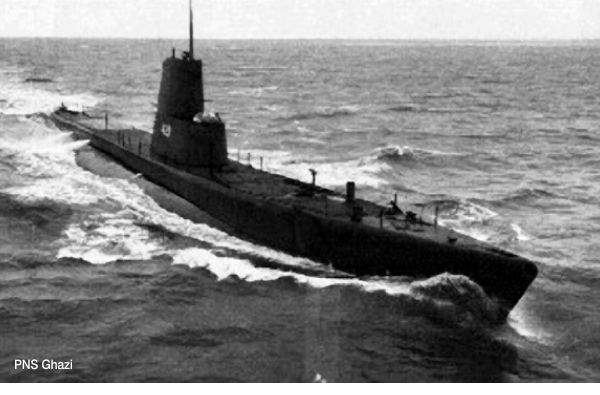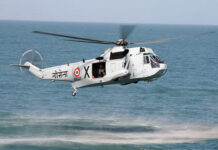
Pakistan had inadequate ships to challenge the Indian Navy on both fronts, and the PAF was unable to protect these ships from both Indian Air Force (IAF) and the Indian Naval Air Arm. Furthermore, Chief of Naval Staff of Pakistan Navy, Vice-Admiral Muzaffar Hassan, had ordered to deploy all of the naval power in the West. Most of the Pakistan Navy’s combatant vessels were deployed in West Pakistan while only one destroyer, PNS Sylhet, was assigned in East-Pakistan on the personal request of Admiral Shariff.
During the conflict, East Pakistan’s naval ports were left defenseless as the Eastern Military Command of Pakistan had decided to fight the war without the navy and faced with a hopeless task against overwhelming odds, the navy planned to remain in the ports when war broke out.
In the eastern wing, the Pakistan Navy had heavily depended on her gun boat squadron. Pakistan’s Eastern Naval Command was in direct command of Flag Officer Commanding (FOC) Rear-Admiral Mohammad Shariff who also served as the right-hand of Lieutenant-General Niazi. The Pakistan Navy had 4 gun boats (PNS Jessore, Rajshahi, Comilla, and Sylhet). The boats were capable of attaining maximum speed of 20 knots (37 km/h), were crewed by 29 sailors. Having known as Pakistan Navy’s brown water navy, the gun boats were equipped with various weapons, including heavy machine guns. The boats were adequate for patrolling and led anti-insurgency operations. But they were hopelessly out of place in a conventional warfare.
Operation Jackpot had severely damaged the operational capability of Pakistan Navy. Before the start of hostilities, all the naval gun boats were stationed at the Chittagong. As the air operations began, IAF aircraft damaged the Rajshahi, while Comilla sank on 4 December. On December 5, the IAF sank two patrol boats in Khulna. The PNS Sylhet was destroyed on December 6 and the Balaghat on December 9 by Indian aircraft. On 11 December, the PNS Jessore was destroyed, while Rajshahi was repaired. Rajashahi managed to evade the Indian blockade and reach Malaysia before the surrender on December 16.
Covert Naval Operations
The Indian Navy started the covert naval operations, which were executed successfully. The Eastern Naval Command of Indian Navy had coordinated, planned, and executed these covert naval operations. In the end months of 1971, the Indian Navy’s Eastern Naval Command had effectively applied a naval blockade which also completely isolated East-Pakistan’s Bay of Bengal, trapping the Eastern Pakistan Navy and eight foreign merchant ships in their ports. The Pakistan Army’s Combatant High Command, The GHQ, insisted and pressured Pakistan Navy to deploy PNS Ghazi and to extend its sphere of naval operations, into East-Pakistan shores.
In the Eastern wing of Pakistan, the Navy had never maintained a squadron of warships, despite the calls were made by Eastern Naval Command’s Flag Officer Commanding Rear-Admiral Mohammad Shariff.[citation needed] Instead, a brown water navy was formed consisting a gun boats riverine craft on a permanent basis. Consequently, in eastern wing, repair and logistic facilities were not developed at Chittagong. The Indian Navy’s Eastern Naval Command virtually faced no opposition from the Eastern theatre. The aircraft carrier INS Vikrant, along with her escort LST ships INS Guldar, INS Gharial, INS Magar, and the submarine INS Khanderi, executed their operations independently.
On December 4 of 1971, the INS Vikrant, the aircraft carrier, was also deployed in which its Hawker Sea Hawk attack aircraft contributed in Air Operations in East Pakistan. The aircraft successfully attacked many coastal towns in East Pakistan including Chittagong and Cox’s Bazaar. The continuous attacks later destroyed the PAF’s capability to retaliate.
The Pakistan Navy responded by deploying her aging long-range submarine, PNS Ghazi, to counter the threat as the Naval Command had overruled the objections by her officers. The PNS Ghazi, under the command of Commander Zafar Muhammad Khan, was assigned to locate the INS Vikrant, but when it was not able to locate, decided to mine the port of Vishakapatnam the Headquarter of Eastern Naval Command. The Indian Navy’s Naval Intelligence laid a trap to sink the submarine by giving fake reports about the aircraft carrier. At around midnight of 3-4 December, the PNS Ghazi began its operation of laying mines. The Indian Navy dispatched INS Rajput to counter the threat.
The INS Rajput’s sonar radar reported the disturbance underwater and two depth charges were released. The deadly game ended when the submarine sank mysteriously while laying a mine with all 92 hands on board around midnight on 3 December 1971 off the Vishakapatnam coast.
The sinking of Ghazi turned out to be a major blow and setback for Pakistan Naval operations in East-Pakistan. It diminished the possibilities of carry out the large scale of Pakistan naval operations in Bay of Bengal. It also eliminated further threat possessed by Pakistan Navy to Indian Eastern Naval Command. On reconnaissance mission, the Ghazi was ordered to report back to her garrison on November 26, and admitted a report Naval Combatant Headquarter, NHQ. However, it was failed to return to her garrison. Anxiety grew day by day at the NHQ and NHQ had pressed frantic efforts to establish communications with the submarine failed to produce results.
On 5/6 December 1971, naval air operations were carried out Chittagong, Khulna, and Mangla harbours, and at ships in the Pussur river. The oil installations were destroyed at Chittagong, and the Greek merchant ship Thetic Charlie was sunk at the outer anchorage. On December 7/8, the airfields of PAF were destroyed, and the campaign continued until 9 December. On December 12, Pakistan Navy laid mines on amphibious landing approaches to Chittagong. This proved a useful trap for some time, and it had denied any direct access to Chittagong port for a long time, even after the instrument of surrender had been signed. The Indian Navy therefore decided to carry out an amphibious landing at Cox Bazar with the aim cutting off the line of re-treat for Pakistan Army troops. On December 12, additional amphibious battalion was aboard on INS Vishwa Vijaya was sailed from Calcutta port. On the night of December 15/16, the amphibious landing was carried out, immediately after IAF bombardment of the beach a day earlier. After fighting for days, the human cost was very high for Pakistani forces, and no opposition or resistance was offered by Pakistani forces to Indian forces.
The successful Indian Air Operations and Operation Jackpot, led by the Bengali units with the support of Indian Army, undermined the operational capability of Pakistan Navy. By the time Pakistan Defences Forces surrendered, the Navy had suffered the most damage as almost all of the gun boats, destroyer (PNS Sylhet), and the long-range submarine, PNS Ghazi, were lost in the conflict, including their officers.
On December 16, at 16:13hrs, Deputy Command of Eastern Command and the Commander of Eastern Naval Command, Rear-Admiral Mohammad Shariff surrendered his Naval Command to Vice-Admiral R.N. Krishna Eastern Naval Command.
The Sinking of PNS Ghazi – Pak Version
In his book, “Pakistan’s Crisis in Leadership”, written in 1972 soon after the war, Maj General Fazal Muqeem Khan states: (Page 337)
“The submarine Ghazi was despatched to the Visakhapatnam Naval Base in the Bay of Bengal. The Ghazi’s task was to carry out offensive mine laying against Visakhapatnam.
“The Navy ordered the submarines to slip out of harbour quietly on various dates between 14 and 22 November. They were allocated patrol areas covering the west coast of India, while Ghazi was despatched to the Bay of Bengal with the primary objective of locating the Indian aircraft carrier, INS Vikrant, which was reported to be operating in the area.
“On 14 November 1971, PNS Ghazi, under the command of Cdr Zafar Mohammad Khan, sailed out of harbour on a reconnaissance patrol.
“The first indication of Ghazi’s tragic fate came when a message by NHQ India, claiming sinking of Ghazi on the night of 3 December but issued strangely enough on 9 December, was intercepted. Both the manner of its release and the text quoted below clarified very little: “I am pleased to announce that Pakistan Navy Submarine Ghazi sunk off Visakhapatnam by our ships on 3/4 December. Dead bodies and other conclusive evidence floated to surface yesterday – 091101 EF”… As it happened, the release of the message on 9 December also served to divert attention of their public from the sinking of Khukri on this very date even though the claim of sinking Ghazi was apparently made a few hours before the loss of Khukri”.

















